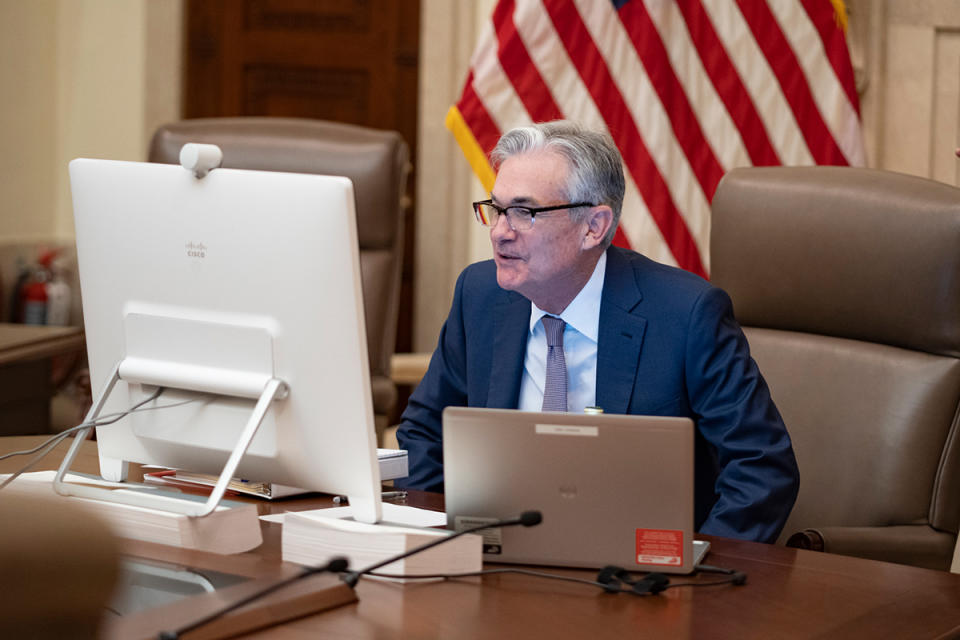How the Federal Reserve, working from home, prevented a US economic collapse
As the country’s largest banks attempt to bring their employees back to work, the U.S. central bank is keeping most of its 20,000 employees at home.
The Federal Reserve and its 12 regional banks scattered across the country are in the midst of an effort to lift the U.S. economy out of the COVID-19 recession — and they are largely doing it from living rooms.
At the Federal Reserve Bank of San Francisco, about 94% of the bank has been working from home since March. At the Federal Reserve Bank of Chicago, some staff were told the earliest they would be called back into the office would be July 6, 2021.
“We are all largely working remotely. Most of the banks and branches have very limited staffing, if any,” Fed Vice Chairman Randal Quarles said in a webinar October 21.
A spokesperson for the Federal Reserve said any return to the office would be driven by data.
“We will also consider the guidance from public health officials, availability of testing, local conditions, and the status of transportation and other critical infrastructure to determine how best to continue to support the broader economy, financial system and the public,” the Fed told Yahoo Finance.
In contrast, the nation’s largest bank, JPMorgan Chase, reported in mid-October that 20% of its staff in New York and London had returned to the office. Citigroup ramped up its efforts to bring employees back in the New York tri-state area in the first week of October.
At the Fed regional banks, leadership said they were surprised with the central bank’s ability to operate with most staff remote. San Francisco Fed President Mary Daly said October 22 that employees “haven’t missed a step” in its ability to carry out its normal operations.
“If you had asked me before the pandemic what fraction of your teams could work at home successfully, I would have given you a number like 20%,” Daly said.
‘10,000 times better’
For the Federal Reserve, working from home has also come with more work.
To counteract the negative economic effects of the COVID-19 shutdowns, the Fed slashed interest rates to near-zero, added $3 trillion in assets to its balance sheet, and created 13 emergency liquidity facilities to backstop markets ranging from corporate debt to municipal bonds.
Most of those liquidity facilities were supported by money allocated to the Fed and U.S. Treasury from the Coronavirus Aid, Relief, and Economic Security (CARES) Act.
“Work was noticeably busier right after the CARES Act,” one analyst at the Chicago Fed said.
The Fed had embraced teleworking well before the pandemic. At the Fed Board in Washington, D.C., eligible staff are permitted to have “alternative work arrangement” schedules that allow them to work one day a week, for example, at home.
It remains to be seen if the pandemic will lead to permanent changes in the Fed’s teleworking or travel policies, but job postings for positions at the Fed hint at some changes. A listing for a senior operational risk specialist at the San Francisco Fed notes that they “are anticipating lower overall travel for supervisory activities following the pandemic.”
In the meantime, Fed staff appear content with the ability to work from home. At the Board, one analyst said he felt the Fed was accommodative of teleworking arrangements, adding that remote work was “10,000 times better” than going into the office.
Quarles may agree since he no longer has to make the 1,800-mile commute from his home in Salt Lake City to his office in the nation’s capital.
“I don’t have to get on a plane and arrive at Dulles at midnight on Sunday night every week as I was before,” Quarles said October 21.
Brian Cheung is a reporter covering the Fed, economics, and banking for Yahoo Finance. You can follow him on Twitter @bcheungz.
Fed lowers minimum loan size on small business loans to Main Street
Former NY Fed President: No conflict of interest between Fed and Congress
Former NY Fed chief: Central bank's ability to stimulate economy 'rapidly diminishing'
Less-educated Asian Americans among hardest hit by job losses during pandemic
A glossary of the Federal Reserve's full arsenal of 'bazookas'
Read the latest financial and business news from Yahoo Finance
Follow Yahoo Finance on Twitter, Facebook, Instagram, Flipboard, SmartNews, LinkedIn, YouTube, and reddit.

